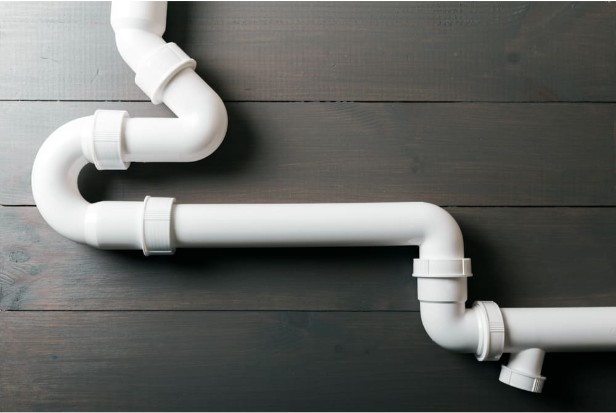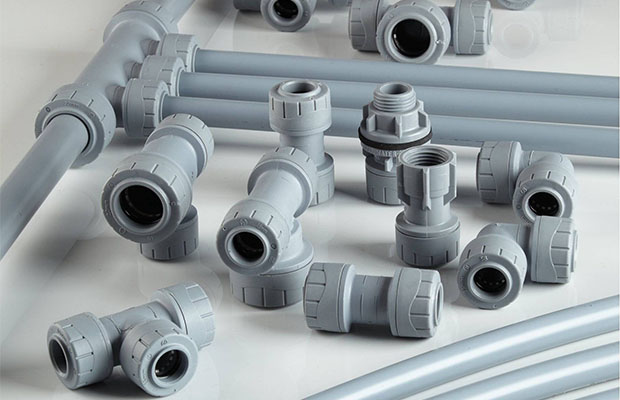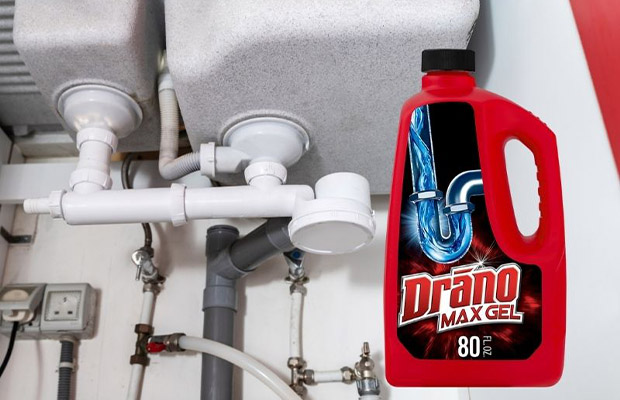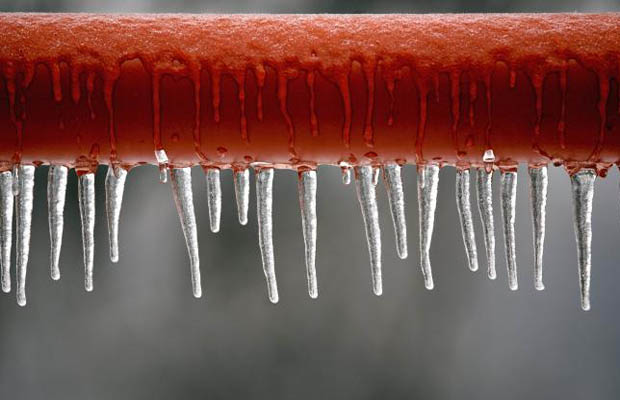
The pipes in the wintertime froze at some point during the night. If you wait long enough, will those frozen pipes thaw on their own? How cautiously should you start unfreezing pipes if they don’t? How to unfreeze pipes?
It’s never simple to deal with annoying frozen pipes, no matter how many times you’ve done it. It’s crucial to quickly thaw a frozen water pipe.
Here are seven guidelines to remember so you can get the water moving and prevent a burst pipe and potentially costly flood at your home.
Pipe Related Post: How To Clean Glass Pipe Properly?
Table of Contents
Why Will Pipes Freeze?
Frozen pipes are one of the most annoying cold-weather ailments, but what exactly causes them? When the temperature drops, water may freeze inside plastic pipes, expanding and pressurizing as a result. Frozen pipes not only disrupt normal water flow, but they also run the risk of bursting and flooding your house. In light of this, it’s imperative that homeowners are aware of what to do in the event that pipes freeze.
Related Reading: At What Temperature Do Pipes Freeze?
Locating The Frozen Pipe Is Important
Finding frozen pipes involves figuring out what doesn’t work.
From a kitchen faucet that isn’t delivering water or a toilet that isn’t refilling, check the plumbing backward.
- See if the pipes have any condensation or a thin layer of frost.
- Utilizing a small tool, tap pipes while listening for a solid sound.
- To find the coldest spots on a pipe, touch the surface.
Examine the plumbing in the crawlspaces and the basements carefully. Check the water main entering the house, and don’t forget about the outside faucets.
How To Unfreeze Pipes?
How can you tell if your pipes are frozen? Turning on the bathroom or kitchen faucet and only getting a trickle or a few drops of water may mean that the water inside the pipes has frozen, preventing a free flow. Do not, however, become frightened; you might be better prepared than you believe to handle the situation. Here is a brief tutorial on how to defrost a frozen pipe.
Step 1: Turn On The Faucet
Enabling even a tiny drip from the faucet can help stop a pipe from bursting, so keep it running. The solution is straightforward: when freezing occurs, tremendous pressure develops between the faucet and the ice blockage. This pressure is released by an open faucet, which helps to avoid a burst.
Step 2: Apply Heat To The Frozen Area
Use a hair dryer to slowly apply heat. You can accomplish this in a number of ways. You can either use an external heat source, like a hair dryer or space heater, or you can wrap the pipes in thermostatically controlled heat tape. Avoid using a propane torch because it might damage the pipe and start a fire.
If you do decide to use a hair dryer, start blowing air close to the faucet end of the pipe and work your way gradually toward the coldest part. Take care to avoid blowing a fuse or overheating the hair dryer. Keep in mind that while applying heat, the faucet needs to be left running.
Step 3: Continue To Apply Heat
Once full water pressure has been restored, continue heating. Even so, it’s a good idea to leave the faucet open for a while after the pipe has thawed. As a result, the ice will have more time to fully recede from the line.
Step 4: Check All Faucets And Prevent Pipes From Freezing In The Future
For any other frozen pipes, check each faucet in your house. One frozen pipe could indicate the presence of additional ones.
Get in touch with a plumber if the issue continues. By taking a few easy measures, you can stop pipes from freezing again:
- Keep your house above freezing before leaving, and turn off all of the water supplies.
- Make sure that all water pipes are kept warm by using a heating cable or foam rubber, especially those that are close to exterior walls.
- Keep cabinet doors open to let air flow.
- Allow cold water to drip from your faucets; even a trickle of flowing water makes it harder for a pipe to freeze. You can catch the drips and reuse the water, perhaps for cleaning or for watering plants, to avoid wasting it.
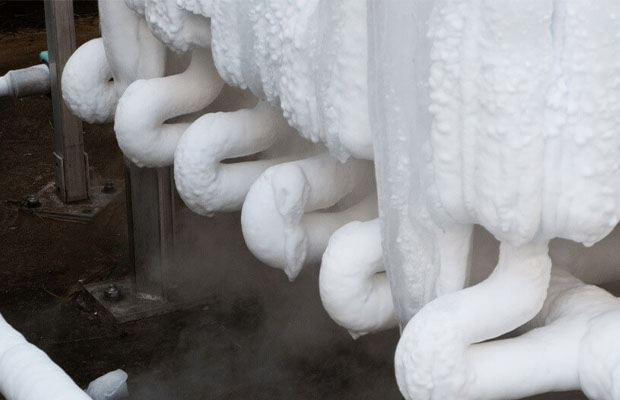
How Long Do Pipes Need To Defrost?
Fortunately, most DIY methods for unfreezing pipes get the water flowing again in 30-40 minutes.
The urge to let the pipes defrost naturally may tempt you. But keep in mind:
Depending on the weather, the process can take days. Until the temperature drops to 20 degrees Fahrenheit, pipes typically do not freeze. By that time, the water inside the pipes has solidified and is applying pressure that can reach 40,000 PSI.
However, that period of time may change based on the location and length of time the pipes have been frozen.
Things To Do If Your Water Pipes Burst
There are various ways to handle various locations, but all burst pipes require prompt repair and cleanup of plumbing leaks.
These guidelines could ease a difficult task, depending on where the pipe froze:
Burst Kitchen Pipes – Use fiberglass pipe tape, a plumber’s putty, or a hose clamp to stop small leaks underneath sinks. Large pipe bursts in the kitchen respond best to a sleeve clamp kit.
Burst Pipes in the Bathroom – Usually found inside walls behind cabinets and fixtures, frozen burst pipes in bathrooms. When a pipe bursts, turn off the water supply and contact restoration experts who specialize in pipe repair.
Turn off the electricity and water supply to your home before addressing frozen burst basement pipes. If the water is deeper than an inch, don’t attempt to clean up a flooded basement. Another task that you might want to leave to the experts is this one.
Burst Pipes in the Garage – Use duct tape or electrical tape to temporarily seal any leaks that may occur from frozen copper pipes in the garage. Fiberglass tape and epoxy putty are examples of long-lasting fixes.
Call a Water Damage Pro – Often, hiring experts in water damage is simpler and quicker. They deal with everything, including water cleanup and property restoration after frozen burst pipes.
Dangers Of Thawing A Frozen Pipe
When attempting to thaw a frozen water pipe, there are two main risks you need to be aware of.
- Fire- You run the risk of starting a fire if you use any type of heat source to defrost the frozen pipe. Never leave the product unattended and be sure to adhere to all safety instructions.
- Burst Pipe– You risk the pipe bursting if you don’t start the thawing process properly. Always start defrosting right next to the faucet.
How To Prevent Frozen Pipes?
The majority of people consider how to handle frozen water pipes this time of year, particularly in Chicago. Although you can’t always prevent it from happening, following this advice will lessen the likelihood of pipes in your house or place of business freezing and bursting.
1. Turn up the thermostat, and circulate warm air through every room by leaving interior doors open.
2. When temperatures plunge, let faucets drip to prevent hot and cold water pipes from freezing.
3. Move warm air through the kitchen and bathrooms by running fans and directing them toward open cabinet doors.
4. Keep cold air from seeping into walls by upgrading insulation and resealing window and door frames.
5. Disconnect and drain hoses, insulate outdoor pipes, and cover faucets before the first freeze hits.
6. live in an apartment in Chicago? Make sure your landlord keeps the temperature set to 68 degrees during the day and 66 degrees overnight; You can report them to 311 if they don’t comply, and the landlord could face a fine of up to $1,000 per day.
The Bottom Line
The information is only intended to be used as information. It is neither a substitute for professional advice of any kind, such as legal, tax, or financial advice.
Never use an open flame, such as a propane torch, to try to thaw a pipe. This might harm the pipe in addition to possibly igniting a fire on your property.
You should contact a plumber or other professional if you are unable to thaw the pipe, are unable to locate the frozen pipe, do not feel comfortable thawing a pipe yourself, or if a pipe bursts. They’ll be able to fix it for you.

